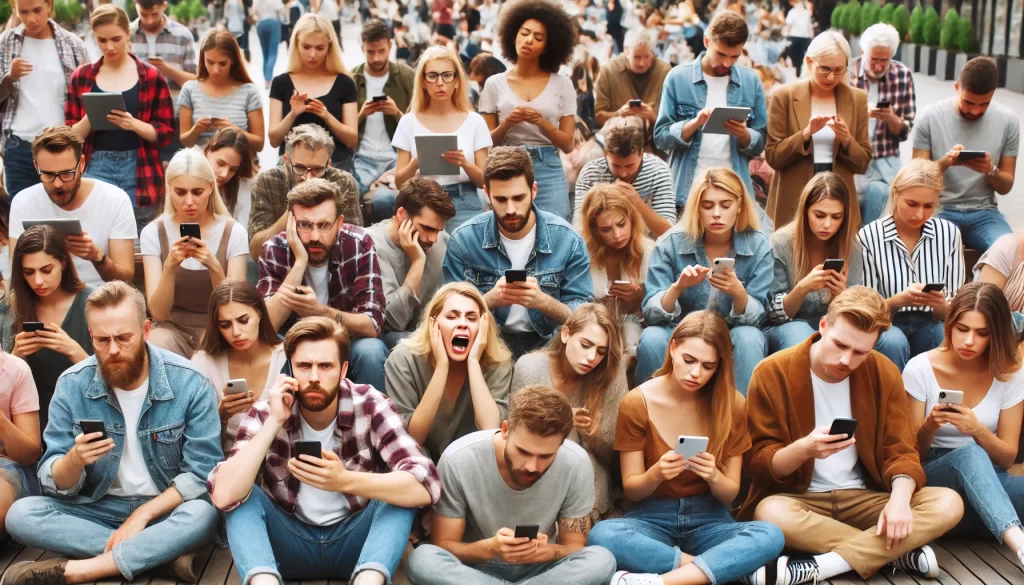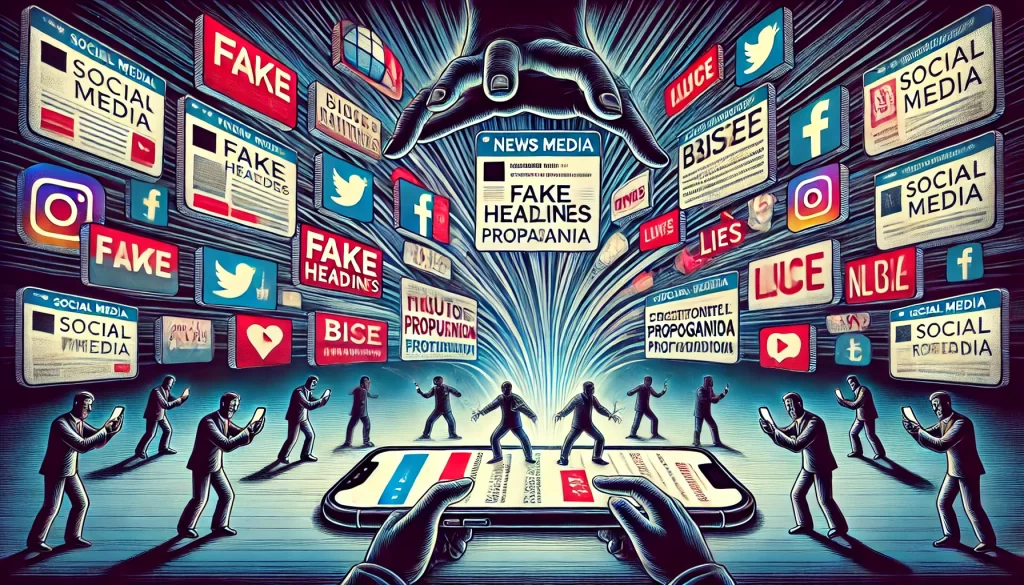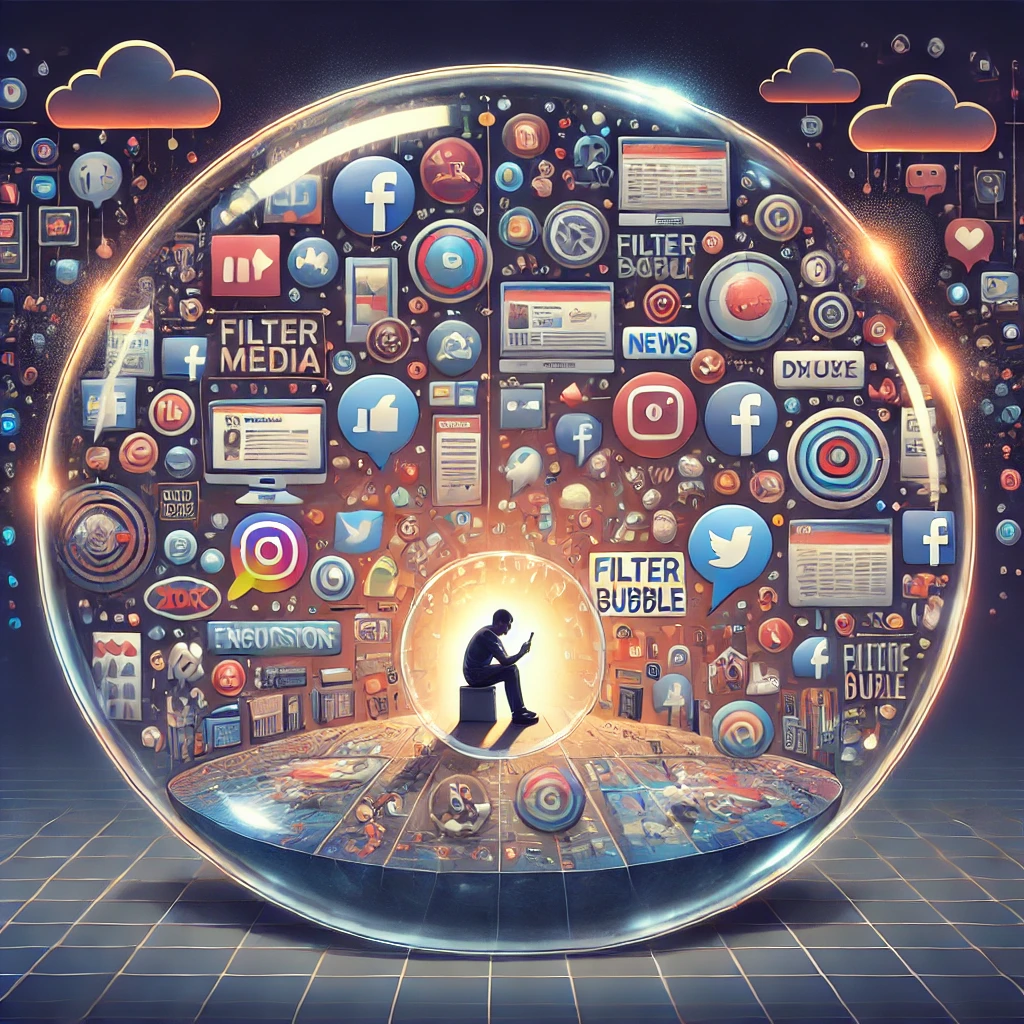
A Vast Reach
Social media has proven to be a more effective platform for spreading propaganda than traditional media due to its vast reach, the ability to target specific users, emotional manipulation, algorithm-driven amplification, and the speed at which information spreads. While print, broadcast, and other forms of media still play roles in shaping public opinion, they simply cannot compete with the scale, focus, and speed offered by social media platforms.
This shift represents a fundamental change in the dynamics of information spread. The power to shape beliefs and influence behavior is no longer concentrated in the hands of a few gatekeepers but is now accessible to anyone who understands how to leverage the tools of technology. As a result, the modern information landscape is more fragmented and volatile, making it increasingly difficult to distinguish between genuine information and propaganda.
Understanding these dynamics is essential for navigating the digital world, particularly as social media plays an ever-larger role in public discourse. Whether we can develop better strategies for recognizing and mitigating propaganda in this new environment remains to be seen, but it must be addressed if we are to preserve the integrity of public information.
Sheer Scale
One of the primary reasons social media is more effective at spreading propaganda than traditional media is its sheer scale. Platforms like Facebook, X (formerly Twitter), Instagram, and TikTok have billions of users globally. Information shared on these platforms can be instantly viewed, and reshared by a wide audience, allowing propaganda to spread virally within hours or even minutes. Unlike print or broadcast media, which require significant resources and distribution channels, social media allows anyone with an internet connection to produce and share content.
Targeting
Another critical advantage social media has over traditional media lies in its ability to micro-target specific individuals or groups. Social media platforms utilize algorithms that gather massive amounts of data on users’ behaviors, interests, and demographics. This data is then used to curate content with which users are most likely to engage, creating a personalized experience. While this system may enhance user satisfaction and increase time spent on the platform, it also can create filter bubbles producing highly effective propaganda.
Propaganda creators can design content that speaks directly to the fears, values, or biases of particular segments of the population. By targeting users who are already inclined to believe certain narratives, propagandists can reinforce pre-existing biases, creating echo chambers in which users themselves specifically choose content that reflects their preexisting ideas without encountering opposing viewpoints.
Emotional Manipulation
Social media platforms are designed to maximize engagement, and the most engaging content is often that which provokes strong emotional responses. Whether it’s outrage, anger, fear, joy, or sadness, emotionally charged content is more likely to be shared and spread than neutral or purely informative posts. This creates an environment in which sensationalism and emotional manipulation thrive, making social media fertile ground for propaganda. The old newspaper dictum, “If it bleeds it leads” has been carried to levels never imagined by previous generations of editors.
The Role of Algorithms
One of the most insidious aspects of propaganda on social media is the role of algorithms in determining what content users see. These algorithms are designed to prioritize content that keeps users engaged, often by promoting material that aligns with their existing beliefs or that provokes strong emotional reactions. In doing so, algorithms contribute to the spread of propaganda by ensuring that polarizing or misleading content reaches more people.
The Speed and Scale of Misinformation
Unlike print or broadcast media, where editorial processes and production timelines can act as natural checks on the spread of misinformation, social media operates in real-time. Users can share content instantly, without fact-checking or verifying sources. This speed makes it much easier for propaganda to spread before it can be debunked. By the time fact-checkers have corrected misinformation, it has already reached millions of people, many of whom may never see the correction.
The decentralized nature of social media makes it difficult to trace the origins of propaganda. Fake accounts, bots, and coordinated campaigns can obscure the sources of misleading content, making it harder for users to assess the credibility of the information they encounter. In traditional media, the source of information is typically clear, whether it’s a newspaper, a television network, or a radio station. On social media, the source of propaganda can be either disguised or entirely anonymous, or perhaps even fabricated by artificial intelligence, adding layers of complexity to the problem.
Hopefully this Brave New World of social media does not overwhelm the values that guide our country.




Who Will Tell Our Stories?
By John Turley
On January 25, 2025
In Commentary
The Decline of Community Newspapers
“Were it left to me to decide whether we should have a government without newspapers, or newspapers without a government, I should not hesitate a moment to prefer the latter.” Thomas Jefferson’s words resonate now more than ever in today’s media landscape, where local newspapers—the cornerstone of informed citizenship—are vanishing at an alarming rate. But it is more than just newspapers at risk—it is our very democracy.
Growing up in Charleston during the 1950s and 60s, I witnessed firsthand how integral newspapers were to community life. From delivering The Gazette as a boy to relying on its pages for news of local events and government, newspapers were our primary connection to the world around us.
There weren’t a lot of options for news then. There were no 24-hour news channels. National news on the three networks was about 30 minutes an evening and local news was about 15 minutes. By the late 1960s national news had increased to 60 minutes and most local news to about 30 minutes. Given the limitations of time on the local stations, most of the broadcast was taken up with weather, sports, and human-interest stories with little time left to expand on hard news stories.
We depended on our newspapers for news of our cities, counties, and states and the papers delivered the news we needed. Almost everyone subscribed to and read the local papers. They kept us informed about our local politicians and government and provided local insight on national events. They were also our source for information about births, deaths, marriages, high school graduations and everything we wanted to know about our community.
While newspapers were central in the mid-20th century, the proliferation of digital and broadcast media in the 21st century has transformed how we consume news. There are 24-hour news networks, but they often are a case of too much time and too little news. There are the social media—X (Twitter), Facebook, Tik Tok, Instagram, Truth Social and many other online entities that claim to provide news.
Even though local television news has expanded its format and increased coverage of local hard news, it remains heavily weighted toward sports, weather, and human interest. It is somewhat akin to reading the headline and the first paragraph in a newspaper story. It doesn’t provide in-depth coverage, but hopefully, it motivates people to find out more about events that concern them.
Still, it’s the local newspapers that provide detailed news about local and state events. Here in Charleston our newspapers were consolidated into a single daily paper several years ago. Despite reduced staffing and subscribership, they still make a valiant effort to cover our local news. Eric Eyre provided Pulitzer Prize winning coverage of the opioid epidemic. Currently Phil Kabler, though officially retired, continues to provide insight into the legislature and state government. Mike Tony, another reporter deeply involved in the community, provides coverage of West Virginia energy issues and the ongoing business foibles of our former governor and now senator. Mike recently informed us of an inappropriate—possibly illegal—grant made by the West Virginia Water Development Authority to a private Catholic College in Ohio. The college espouses multiple far right conservative political positions, although they claim this will not influence their project in West Virginia. Mike also pointed out the state statutory requirements for the grant were not met and that the governor’s office, as usual, had no comment. All this was done while West Virginia communities that have been without safe drinking water for months did not receive grants or any other assistance to improve their water systems.
Will TV news ever be able to provide the details about our community? The format of the newspaper allows for more detailed presentations and for a larger variety of stories. The reader can pick which stories to read, when to read them and how much of each to read. I don’t believe that broadcast news will ever fill the role of a free press. The broadcast is an ethereal thing. You hear it and it’s gone. It is always possible to record it and play it back, but most people don’t. Newspapers by their very nature encourage critical thinking. You can read it, think about it, and read it again. There are times when on my second or third reading of an editorial or a news article I’ve changed my opinion about either the subject or the writer. A news broadcast doesn’t lend itself to this type of reflection. When listening to broadcast news I often find my mind wandering as something that the broadcaster said sends me in a different direction.
I worry about the future of newspapers. According to a study by Northwestern University’s Medill School of Journalism, more than 360 newspapers have closed nationally since the beginning of the COVID pandemic. Since 2005 over 3300 newspapers have closed or consolidated—more than one third of the nation’s total. The U.S. has also lost about 43,000 newspaper journalists, representing nearly two-thirds of the total. It would be a tragedy to continue losing newspapers and journalists at this rate.
I beg everyone to please subscribe to your local newspapers. I generally prefer the hands-on, physical newspaper though I understand many people prefer the convenience of the digital version and I find myself moving in this direction. Whichever version you prefer, please subscribe. Don’t pretend that online sources, such as Facebook, X, and Instagram will provide you with local news rather than just gossip. Even the online news feeds from the dedicated news networks such as CNN or Fox provide little more than headlines. There’s little you can use to make an informed decision.
Without local news, we risk losing touch with how local and state governments affect our lives. Without this knowledge, we may be at risk of losing our freedom. Many countries that have succumbed to dictatorship have first lost their free press. One of the first acts of the would-be dictator is to attempt to silence the free press.
In my opinion, broadcast news is controlled by advertising dollars and viewer ratings affecting their coverage and orientation. News seems to be treated like any entertainment program with the output designed to attract an audience, not present facts. I recognize that this can be the case with newspapers as well, but it seems to me that it’s much easier to detect bias in the written word than in the spoken word. Too often we can get caught up in the emotions of the presenter or in the graphics that accompany the story.
With that in mind, I recommend that if you want unbiased journalism, please support your local newspapers before we lose them. Once they are gone, we will never get them back and we will all be much the poorer as a result.
I will leave you with a final quote.
A free press is the unsleeping guardian of every other right that free men prize; it is the most dangerous foe of tyranny. –Winston Churchill